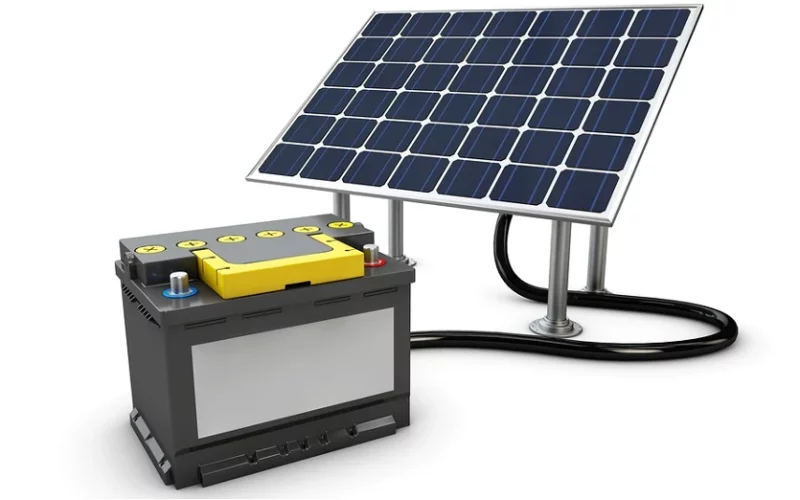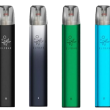Introduction
Storing solar energy lets you use clean power day and night. The right battery system keeps your lights on during outages and cuts your electricity bills. With many options on the market, choosing the best batteries for solar power storage can feel overwhelming. In this article, we explain why battery storage matters, what features to look for, and review the top battery models available today. By the end, you will know how to pick a system that fits your home’s needs and budget.
Why Solar Battery Storage Matters
Solar panels generate power when the sun is shining. Yet most homes need electricity in the evening and on cloudy days. A battery system stores extra energy for later use. Key benefits include:
- Energy Independence: You use more of your own solar power and rely less on the grid.
- Cost Savings: You buy less electricity from your utility company.
- Backup Power: Batteries keep essential appliances running during blackouts.
- Grid Support: Stored energy can be sold back to the grid in some regions.
By adding battery storage, you get the most value from your solar panels and help reduce carbon emissions.
Key Factors When Choosing Solar Batteries
Not all batteries perform the same. Before picking a model, consider these factors:
Capacity and Depth of Discharge (DoD)
Capacity is the total energy a battery holds, measured in kilowatt‑hours (kWh). DoD is how much of that capacity you can use without damaging the battery. A battery with 10 kWh capacity and 90 percent DoD gives you 9 kWh of usable energy.
Round‑Trip Efficiency
This measures energy lost when charging and discharging. If a battery has 90 percent round‑trip efficiency, you get back 90 percent of the energy you put in. Higher efficiency means less waste and more savings.
Lifespan and Warranty
Battery life is measured in cycles or years. A cycle is one charge and discharge. If a battery is rated for 5,000 cycles and you use one cycle per day, it lasts about 13 years. Warranties of 10 years or more offer peace of mind.
Chemistry and Safety
Common chemistries include lead‑acid, lithium‑ion, and flow batteries:
- Lead‑acid batteries are low cost but heavy and have shorter lifespans.
- Lithium‑ion batteries are lighter, more efficient, and last longer.
- Flow batteries use liquid electrolytes and can cycle many times, but they are large and costly.
Cost per Kilowatt‑Hour
Divide the system’s total cost by its usable capacity to compare pricing. A $10,000 system with 10 kWh usable capacity costs $1,000 per kWh. Look for balance between upfront cost, performance, and lifespan.
Types of Solar Batteries
Lead‑Acid Batteries
These are the oldest type. They include flooded and sealed (AGM) varieties. Pros:
- Lower upfront cost
- Proven technology
Cons:
- Heavy and bulky
- Lower DoD (50–70 percent)
- Requires maintenance if flooded type
Lithium‑Ion Batteries
Today’s most popular choice for home solar storage. Pros:
- High DoD (up to 95 percent)
- Lightweight and compact
- Long cycle life (4,000–6,000 cycles)
- High round‑trip efficiency (90–95 percent)
Cons:
- Higher upfront cost
- Requires proper battery management systems
Flow Batteries
These use two liquid electrolytes separated by a membrane. Pros:
- Very long cycle life (>10,000 cycles)
- Can fully discharge without damage
Cons:
- Large footprint
- High initial cost
- Less common for homes
Top Solar Power Storage Batteries
Tesla Powerwall 2
Tesla Powerwall 2 remains a market leader. It offers:
- 13.5 kWh usable capacity
- 90 percent round‑trip efficiency
- Scalable up to 10 units
- Built‑in inverter and compact design
Its smart software integrates with home energy management, allowing load shifting and backup support.
LG Chem RESU
LG Chem’s RESU series includes models like RESU10H:
- 9.8 kWh usable capacity
- 95 percent round‑trip efficiency
- Modular sizes from 6.5 to 16 kWh
- Compatible with many inverters
RESU batteries are known for high performance and flexible installation options.
Sonnen eco
Sonnen eco is a lithium‑iron‑phosphate (LFP) system designed for durability:
- Models from 5 to 20 kWh
- 90 percent round‑trip efficiency
- 10 year or 10,000 cycle warranty
- Integrated energy management software
Sonnen units work well in off‑grid and grid‑tied setups, with options for community energy sharing.
Enphase Encharge
Enphase Encharge batteries integrate with the Enphase microinverter system:
- 10.08 kWh per unit
- 96 percent round‑trip efficiency
- Holds DC coupling, ideal for existing Enphase solar arrays
- Stackable up to 40 kWh
This modular design fits various home sizes and simplifies system design.
BYD Battery‑Box
A versatile lithium‑iron‑phosphate solution:
- Scalable capacity from 2.5 to 12.8 kWh per module
- 95 percent round‑trip efficiency
- LFP chemistry for safety and long life
- Works with multiple inverters via standard protocols
BYD’s battery‑box offers competitive pricing and reliable performance.
Installation and Cost Considerations
Installing a solar battery system involves:
- Site Assessment: Evaluate your energy usage, solar array size, and space for batteries.
- Inverter Compatibility: Ensure your inverter supports battery storage or add a hybrid inverter.
- Electrical Upgrades: Panels, breakers, or wiring may need updates to handle battery integration.
- Permitting and Incentives: Local permits and interconnection agreements can add time. Look for government rebates or tax credits.
Total installation costs range from $1,000 to $1,500 per kWh of capacity, including labor and permits.
Maintenance and Monitoring
Solar batteries require minimal upkeep:
- Regular Inspection: Check for loose connections or physical damage.
- Software Updates: Keep the battery management system firmware current.
- Performance Monitoring: Use apps or portals to track state of charge, cycles, and efficiency.
- Environment Control: Install in a cool, dry location to maximize lifespan.
Most systems come with remote monitoring, alerting you to issues before they become serious.
Environmental Impact and Recycling
Battery production uses raw materials like lithium, cobalt, and nickel. Responsible sourcing and recycling reduce environmental footprints. At end of life, many manufacturers offer take‑back or recycling programs. Proper recycling recovers valuable materials and prevents harmful waste.
Future Trends in Solar Storage
Battery technology continues to improve:
- Solid‑State Batteries: Promise higher energy density and safety.
- Advanced Flow Batteries: Aim to reduce size and cost for home use.
- Vehicle‑to‑Grid Integration: Electric cars acting as home batteries.
- Artificial Intelligence: Smarter energy management for peak shifting and grid support.
These advances will drive down costs and boost performance in the coming years.
Conclusion
Choosing the best batteries for solar power storage depends on your home’s energy needs, budget, and available space. Lithium‑ion batteries like Tesla Powerwall, LG Chem RESU, and Sonnen eco offer high efficiency and long life, while flow batteries and lead‑acid remain options for specific cases. Consider capacity, efficiency, lifespan, and total installed cost when comparing models. Proper installation, maintenance, and recycling ensure your system delivers clean power reliably for years. With the right battery storage solution, you can maximize savings, gain energy independence, and support a cleaner future. Start researching today and take the next step toward a smarter, self‑powered home.












